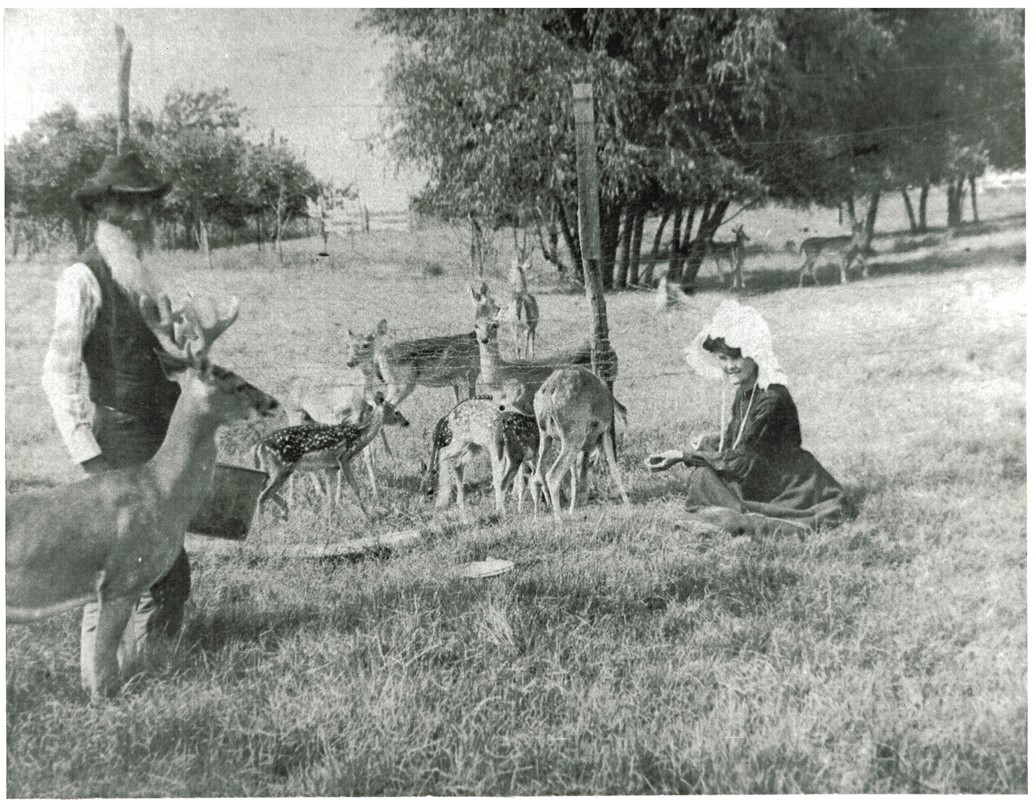This article originally appeared in the Garland/Mesquite section o The Dallas Morning News on September 29, 1995.
By Michael R. Hayslip
The Garland/Mesquite range during the early settlement days of the 1840s and 1850s was definitely a home where deer, if not antelope, played. And while the buffalo might have already roamed away toward near extinction, the locals still hosted wild hogs and wolves on their properties.
In her personal recollections, published in part by the Garland News in 1927, Mrs. George W. “Kate” James paints a view of the surroundings when her family’s wagon arrived from Tennessee at Breckenridge (now Richardson) in 1855: “Our first impression of Texas was the vastness of the prairies and the long range of vision. It seemed as if we could see where the earth and sky met.”
After settling a few years later in the settlement of Duck Creek (now Garland) near Forest Lane, she continued, “[the prairies] were one great flower garden of every hue in such quantities we could gather them by armfuls. . . There was still lots of game here, such as fox, deer, wild turkey, squirrel, quail and prairie chicken, so there was no need of not having all you needed. The greatest problem was the lack of guns and ammunition, especially the latter, but the men and boys resorted to traps and snares, aided by well-trained dogs. Deer were plentiful, and most everybody kept a supply of dried venison or dried beef. The air was so pure that meat did not spoil like it does now.”
“There were lots of hogs in the timber that lived on nuts mostly. In the fall of the year settlers would herd them into pens and feed them corn for a few weeks before they killed them for bacon. . .There were numerous old male hogs who had defied being caught until they had grown large and possessed tusks four or five inches long. When they heard hunters coming they would stand in front of their herd and give warning grunts, and snap those tusks that could be heard a long distance. Woe betide a man or dog that came into striking distance.”
Mrs. James also wrote that as children she and her brothers were picking berries near the present Kraft Foods plant when they “found a little spotted fawn, apparently only a few days old, asleep in a bunch of grass.” After capturing the animal, they named him Billie, carried him home and fed him on milk, somehow training the dogs to leave him alone. After the deer became old enough to bound over the garden fence, Mrs. James’ father converted him to venison, but she steadfastly refused to partake of the meat.
Another Garlandite partial to pet deer even after settlement expelled the native herds was T. K. “Uncle Tom” Flowers, who raised the native white tails on his farm at First Street and Avenue D. Although written accounts are sketchy, some local octogenarians believe that Flowers began deer farming before 1900 and continued for some years thereafter, since they claim to have seen the herd. Reports are that the animals were tame enough that visitors drove out from Dallas to feed them.
One of the surviving photo records shows Flowers feeding peanuts to his deer. Although peanuts never became a cash crop in this area, tradition has it that some individuals produced them in small quantities from home gardens. Unless he was one of those home growers, Flowers was forced to purchase the feed elsewhere.
No one is known to have made pets of the wild hogs, regardless of what they liked to eat.
According to the Texas Agricultural Extension Service, the white-tailed deer is the number one game animal in Texas, and Texas now has more whitetails than any other state. Besides hunting recreation, this resource provides well over 16 million pounds of boneless venison each year.
Photo caption: Uncle Tom Flowers


